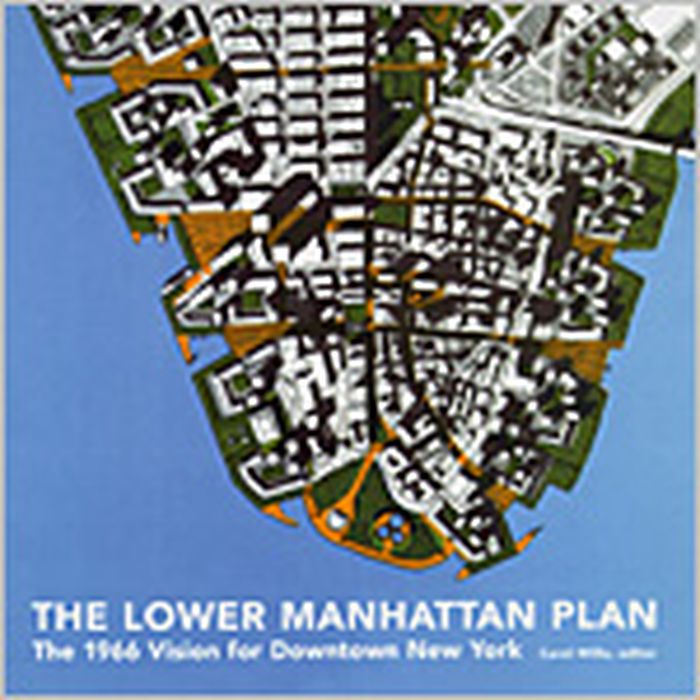Architecture de New York
$67.00
(available to order)
Summary:
Ce livre propose un panorama synthétique de l'architecture d'une ville unique en son genre, symbole par excellence de la métropole contemporaine. Des notices détaillées, classées par ordre chronologique, retraçant l'histoire d'une trentaine de monuments, représentatifs des métamorphoses incessantes d'un paysage urbain en perpétuelle évolution. On y trouve de véritables(...)
Architecture since 1900, Europe
December 2003, Paris
Architecture de New York
Actions:
Price:
$67.00
(available to order)
Summary:
Ce livre propose un panorama synthétique de l'architecture d'une ville unique en son genre, symbole par excellence de la métropole contemporaine. Des notices détaillées, classées par ordre chronologique, retraçant l'histoire d'une trentaine de monuments, représentatifs des métamorphoses incessantes d'un paysage urbain en perpétuelle évolution. On y trouve de véritables classiques architecturaux, tels que l'Empire State Building ou le Guggenheim Museum, mais aussi de très nombreux édifices récents, comme la tour LVMH, achevée en 1999. L'ouvrage donne ainsi un aperçu complet de la variété stylistique de deux siècles de création architecturale.
Architecture since 1900, Europe
$41.50
(available to order)
Summary:
In the mid-1960s, New York City Mayor Robert Wagner assembled a team of the best and brightest urban designers and architects to decide the future of downtown Manhattan. After six months of drawing and discussion, they produced "The Lower Manhattan Plan", a 368-page document that was hand-typed, hand-bound, and photocopied. Only one hundred copies were made. But in spite(...)
Lower Manhattan plan : the 1966 vision for downtown New York
Actions:
Price:
$41.50
(available to order)
Summary:
In the mid-1960s, New York City Mayor Robert Wagner assembled a team of the best and brightest urban designers and architects to decide the future of downtown Manhattan. After six months of drawing and discussion, they produced "The Lower Manhattan Plan", a 368-page document that was hand-typed, hand-bound, and photocopied. Only one hundred copies were made. But in spite of the limited number, this became the most influential document in determining the physical appearance of lower Manhattan. Now, as the future of downtown Manhattan is being reconsidered, "The Lower Manhattan Plan" takes on new relevance, offers new parallels for transforming Manhattan, and provides a thoughtful and careful consideration of many issues that are as pressing today as they were when the World Trade Center were just beginning construction. This complete reprint of the original document has an introduction by Skyscraper Museum Director Carol Willis and an essay by urban historian Ann Buttenwieser.
Urban Theory
$115.00
(available to order)
Summary:
This volume is dedicated to the 565 Broome Street skyscraper, the first residential building conceived by Renzo Piano and designed by the Renzo Piano Building Workshop in the city of New York. Developed by Bizzi & Partners, the double tower occupies a corner space in the SoHo district, close to the Hudson River. Rich and fascinating iconography and a text by Federico(...)
565 Broome Soho: Renzo Piano Building Workshop
Actions:
Price:
$115.00
(available to order)
Summary:
This volume is dedicated to the 565 Broome Street skyscraper, the first residential building conceived by Renzo Piano and designed by the Renzo Piano Building Workshop in the city of New York. Developed by Bizzi & Partners, the double tower occupies a corner space in the SoHo district, close to the Hudson River. Rich and fascinating iconography and a text by Federico Bucci and Carol Willis describe the design, the main features of the building, and how it relates to the city and the light that surrounds it in a unique way.
Architecture Monographs
books
$34.95
(available to order)
Summary:
In contrast to standard histories that counterpose the design philosophies of the Chicago and New York "schools," Willis shows how market formulas produced characteristic forms in each city - "vernaculars of capitalism" - that resulted from local land-use patterns, municipal codes, and zoning. Refuting some common clichés of skyscraper history such as the(...)
Form follows finance : skyscrapers and skylines in New York and Chicago
Actions:
Price:
$34.95
(available to order)
Summary:
In contrast to standard histories that counterpose the design philosophies of the Chicago and New York "schools," Willis shows how market formulas produced characteristic forms in each city - "vernaculars of capitalism" - that resulted from local land-use patterns, municipal codes, and zoning. Refuting some common clichés of skyscraper history such as the equation of big buildings with big business a nd the idea of a "corporate skyline," Willis emphasizes the importance of speculative development and the impact of real-estate cycles on the forms of buildings and on their spatial distribution.
books
November 1995, New York
Gratte-ciels
$16.00
(available to order)
Summary:
Immeuble qui demeura «le plus grand et le plus haut du monde» pendant 40 ans, l'Empire State Building fut, en son temps, l'opération immobilière de tous les records : 16 mois de chantier pour 200.000 m2 et 380 m de haut. Un article de Fortune en 1930 le décrit comme «un prisme bizarrement taillé, délimité d’un côté par 7.800 m2 de terrain et plafonné de l’autre par un(...)
Form follows finance : l'Empire State Building et les forces qui l'ont façonné
Actions:
Price:
$16.00
(available to order)
Summary:
Immeuble qui demeura «le plus grand et le plus haut du monde» pendant 40 ans, l'Empire State Building fut, en son temps, l'opération immobilière de tous les records : 16 mois de chantier pour 200.000 m2 et 380 m de haut. Un article de Fortune en 1930 le décrit comme «un prisme bizarrement taillé, délimité d’un côté par 7.800 m2 de terrain et plafonné de l’autre par un budget de 35 millions de dollars ; les autres facettes en [sont] : la loi de décroissance des rendements, celles des caractéristiques physiques des structures en acier, les exigences des ordonnances du zonage et une mise à disposition locative au 1er mai 1931». Malgré son statut d'exception, Carol Willis montre que le mastodonte répondait aussi à une règle architecturale bien américaine – selon laquelle la forme suit (d'abord)... son financement.
Architectural Theory



